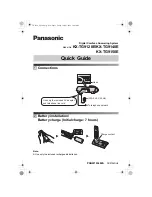
3-65549
92GR MM188 (11---87)
ENGINE
ENGINE LUBRICATION
Check the engine oil level daily. Change the engine
oil and oil filter after every 50 hours of operation.
Change the engine oil more frequently if the
environment is extremely dusty. Use only CD or CE
rated engine oil.
The following SAE oil grades are general
recommendations for engines during the changing
seasonal temperatures.
BELOW 0+F
0+ to 32+F
32+ to 75+F
ABOVE 75+F
(BELOW --- 17+C)
(--- 17+ to 0+C)
(0+ to 24+C)
(ABOVE 24+C)
SAE 5W
SAE 10W
SAE20W
SAE 30
SAE 5W--- 20
SAE 10W--- 30
SAE 10W--- 30
SAE 10W--- 30
SAE 5W--- 30
SAE 10W--- 40
SAE 10W--- 40
SAE 10W--- 40
Multi---grade oil should cover the single grade
recommendation for the temperatures involved. The
engine oil capacity is 7 qt (6.6 L) with filter.
COOLING SYSTEM
Maintaining cooling system efficiency is important.
Engine temperatures must be brought up to and
maintained within the satisfactory range for efficient
operation. However, the engine must be kept from
overheating in order to prevent damage to the
valves, pistons, and bearings.
Use soft, clean water mixed with permanent---type,
ethylene glycol antifreeze in a one---to---one ratio.
Deposits of sludge, scale, and rust prevent normal
heat transfer. Flush the radiator and the cooling
system after every 800 hours of operation using a
dependable cleaning compound. Follow the mixing
procedure recommended by the compound
manufacturer. This is important because of the
difference in concentration and composition of the
cleaning compounds. After cleaning, flush the
system with clean water.
Whenever a cooling system is badly rust---clogged
as indicated by overflow loss or abnormally high
operating temperatures, corrective cleaning by
reverse flow flushing will most effectively remove the
heavy deposits of sludge, rust, and scale. The
reverse flow flushing should be performed
immediately after draining the cleaning solution.
Flush the radiator first, then the engine, to allow the
engine to cool as much as possible.
Engine overheating may also be caused by dirty
radiator fins. The exterior fins of the radiator can be
cleaned with an air hose. Check them for clogging
after every 100 hours of operation. Blow out all dust,
dirt, etc., between the fins, if necessary. This should
be done only after the radiator has cooled off to
avoid cracking caused by uneven cooling.
Before cleaning, remove the fan shroud from the
radiator, then blow out all dust from outside the
machine into the engine compartment (this is the
opposite direction from normal air flow). After the
radiator fins are clean, replace the fan shroud.
The engine is equipped with a 180
_
F (82
_
C)
thermostat. Normal engine temperature is 200
_
F
(93
_
C). Temperatures up to 220
_
F (104
_
C) are
allowable. Temperatures over 200
_
F (93
_
C) indicate
a problem exists.
A pressure cap is used on the radiator to prevent
overflow loss of water during normal operation. The
spring---loaded valve in the cap closes the outlet to
the overflow pipe of the radiator and thus seals the
system. Pressure developing within the system
raises the boiling point of the coolant and allows
higher temperatures without overflow loss from
boiling. The pressure valve opens at 15 psi (100
kPa), allowing steam and water to pass out the
overflow pipe.
WARNING: If the coolant is hot or if the
engine has been operating, let the engine
cool. Hot coolant could scald or cause severe
burns. If in doubt, let the coolant cool before
releasing pressure in the cooling system.
ATTENTION! Never pour cold water or cold
antifreeze into the radiator of an overheated
engine. Allow the engine to cool and avoid the
danger of cracking the cylinder head or block.
Keep the engine running while adding water.
AIR INTAKE SYSTEM
The importance of maintaining an air filter in proper
condition cannot be overemphasized. Dirt induced
through improperly installed, improperly serviced, or
inadequate air filter elements wears out more
engines than long hours of operation. Even a small
amount of dirt will wear out a set of piston rings in
just a few hours. Operating with a clogged air filter
element also causes the fuel mixture to be leaner,
which can lead to formation of harmful sludge
deposits in the engine. Always cover the air intake
when the air filter is removed for servicing. Do not
neglect servicing the air filter. Use only approved
replacement parts. Keep all other air intake
Summary of Contents for 92 GR
Page 1: ...Operator Manual...
Page 10: ...SECTION 1 SPECIFICATIONS CONTENTS Page Machine Specifications 1 1 Machine Dimensions 1 3...
Page 14: ...92GR MM188 6 87 1 4...
Page 33: ...92GR MM188 10 87 2 18...
Page 44: ...3 65545 92GR MM188 11 87 04307 HYDRAULIC SCHEMATIC...
Page 56: ...3 65557 92GR MM188 11 87 04309 ELECTRICAL SCHEMATIC...
Page 57: ...92GR MM188 11 87 3 65558 01502 ELECTRICAL SCHEMATIC ACCESSORIES...
















































